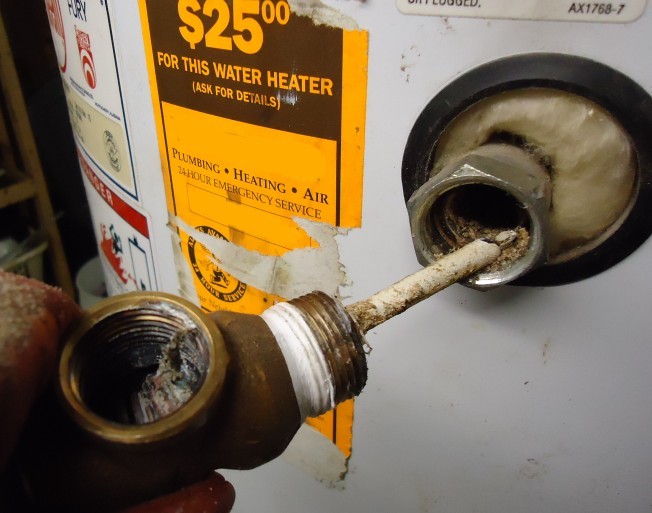We've encountered the article involving Water Heater Maintenance Tips You Can't Afford to Forget directly below on the internet and concluded it made sense to relate it with you on this page.

Warm water is necessary for everyday comfort, whether it's for a revitalizing shower or cleaning meals. To guarantee your hot water system runs efficiently and lasts much longer, routine maintenance is vital. This post provides sensible ideas and insights on just how to preserve your home's warm water system to prevent disruptions and costly fixings.
Introduction
Keeping your home's hot water system could seem daunting, but with a couple of basic steps, you can guarantee it operates efficiently for years ahead. This overview covers everything from comprehending your warm water system to DIY upkeep tips and understanding when to call in expert help.
Relevance of Maintaining Your Warm Water System
Regular maintenance not just expands the life expectancy of your hot water system yet also guarantees it runs effectively. Disregarding maintenance can cause decreased effectiveness, greater energy expenses, and also early failing of the system.
Signs Your Warm Water System Demands Maintenance
Understanding when your warm water system needs focus can prevent major concerns. Look out for indications such as irregular water temperature level, odd sounds from the heater, or rustic water.
Comprehending Your Warm Water System
Prior to diving into maintenance jobs, it's valuable to recognize the basic elements of your warm water system. Commonly, this includes the hot water heater itself, pipelines, anode poles, and temperature level controls.
Monthly Maintenance Tasks
Routine regular monthly checks can assist capture small issues before they escalate.
Flushing the Hot Water Heater
Purging your water heater eliminates debris build-up, boosting performance and prolonging its life.
Checking and Changing Anode Rods
Anode poles prevent corrosion inside the tank. Examining and replacing them when worn is vital.
Checking and Changing Temperature Level Setups
Changing the temperature level settings makes sure ideal performance and safety.
DIY Tips for Maintenance
You can perform several upkeep jobs on your own to maintain your warm water system in top condition.
Checking for Leaks
Routinely examine pipelines and links for leakages, as these can cause water damages and higher bills.
Testing Pressure Relief Valves
Evaluating the pressure relief valve guarantees it operates properly and avoids excessive stress accumulation.
Protecting Pipes
Shielding warm water pipes lowers warmth loss and can save power.
When to Call an Expert
While DIY maintenance is beneficial, some concerns require expert expertise.
Facility Issues Needing Professional Assistance
Instances include significant leakages, electrical problems, or if your hot water heater is constantly underperforming.
Routine Specialist Maintenance Benefits
Specialist maintenance can include detailed assessments, tune-ups, and ensuring conformity with security standards.
Final thought
Regular upkeep of your home's hot water system is crucial for efficiency, long life, and expense financial savings. By complying with these tips and understanding when to seek expert aid, you can make sure a dependable supply of warm water without unexpected disturbances.
How to Maintain an Instant Hot Water Heater
Before tinkering with your hot water heater, make sure that it’s not powered on. You also have to turn off the main circuit breaker and shut off the main gas line to prevent accidents. Also turn off the water valves connected to your unit to prevent water from flowing into and out of the appliance. 2. When you’re done, you have to detach the purge valves’ caps. These look like the letter “T†and are situated on either side of the water valves. Doing so will release any pressure that has accumulated inside the valves while at the same time avoid hot water from shooting out and burning your skin. 3. When the purge valves’ caps are removed, you have to connect your hosing lines to the valves. Your unit should have come with three hoses but if it didn’t, you can purchase these things from any hardware or home repair shops. You can also get them from retail stores that sell water heating systems. Read the user’s manual and follow it to complete this task properly. When the hosing lines are connected, open the purge port’s valves. 4. You should never use harsh chemical cleaners or solutions when cleaning your unit. Make use of white vinegar instead. It should be undiluted and you’ll probably use about 2 gallons. 5. Now flush your water heater. This task should probably take about 40 minutes. We can’t give you specific directions for this because the procedure is carried out depending on the type, model and brand of your heater. With that being said, refer to the user’s manual. 6. When you’re done draining the unit, you have to turn off the purge port valves again. Remove the hosing lines that you earlier installed on each of the water valves. Put the valve caps (purge port) back in their respective places and be very careful so as not to damage the rubber discs that are found inside these caps. 7. Now that everything’s back in place, check your user’s manual again to find out how to reactivate your water heating system. 8. Once it is working, turn one of your hot water faucets on just to let air pass through the heater’s water supply pipes. Leave the tap on until water flows smoothly out of it. https://www.orrplumbing.com/blog/2014/september/how-to-maintain-an-instant-hot-water-heater/

Do you really like more info about What Kind of Maintenance Do Water Heaters Need?? Create a review down below. We would be happy to know your ideas about this blog entry. Hoping that you come back again in the near future. For those who enjoyed reading our blog posting kindly be sure to pass it around. I thank you for your readership.
Go Deal Now